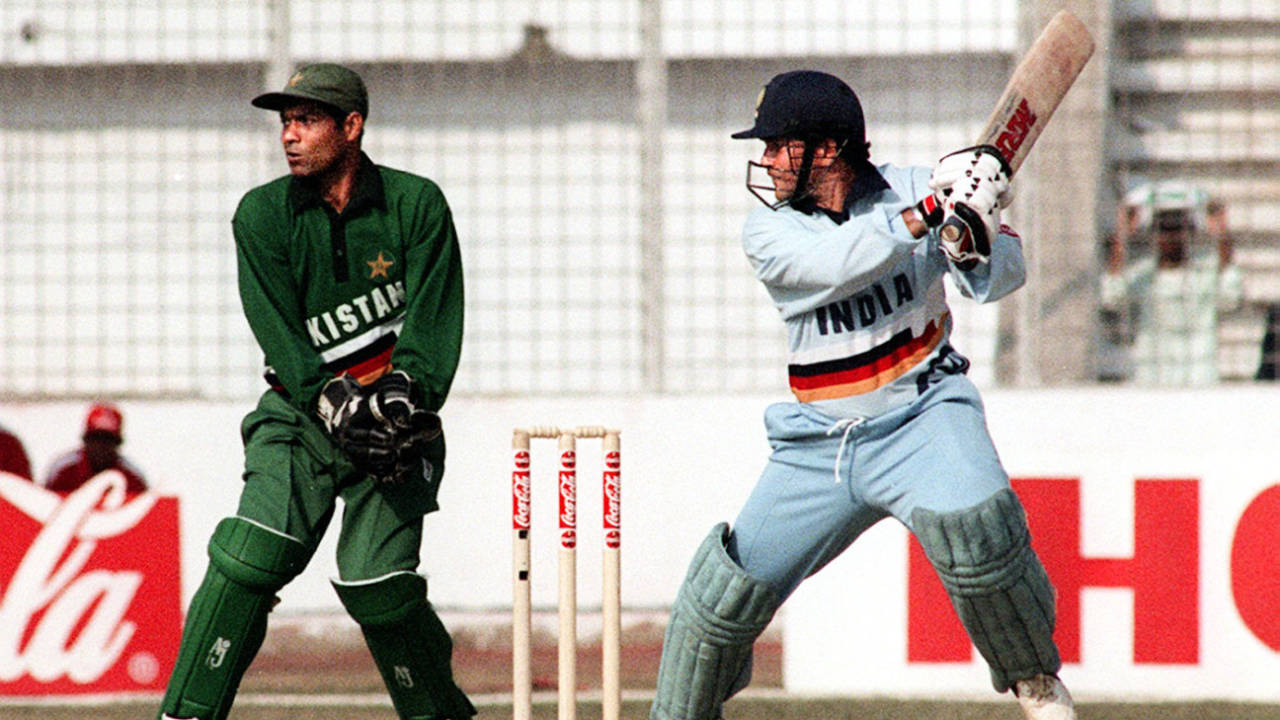Twenty-six years ago, on this day,
Navjot Sidhu was forced to pull out of an ODI in New Zealand because of a stiff neck. That event in itself was quite unmemorable, but it started the journey of arguably the greatest ODI opener ever. A 20-year-old
Sachin Tendulkar, averaging
30.84 from 66 innings in the middle order till then, filled in for Sidhu,
smashed 82 off 49 balls in Auckland, and then made that position his own, amassing 15,310 ODI runs at the top of the order. No other opener has got
to within 2500 runs of that mark.
Of the 386 innings he batted in from that day, only 46 times did he not open the innings. His numbers at the top of the order are staggering: an
average of 48.29, at a strike rate of 88.05, with 45 hundreds in 340 innings. What stands out about these numbers is Tendulkar's ability to combine a high average with a high strike rate, and his phenomenal rate of scoring hundreds (one every 7.6 innings).
How do Tendulkar's numbers match up with the other top openers', especially the current ones, given that the game has shifted gears since Tendulkar played his last ODI in 2012? Let's take a closer look.
Any comparison of ODI batsmen needs to take into account the strike rates prevalent in the era in which the player played; without that, all analysis is meaningless. Also, the analysis needs to factor in the volume of runs scored and the rate of getting them. We shall address those in the following way:
For instance, in the period when Tendulkar opened the batting - from March 27, 1994 to March 18, 2012 - the overall average in ODIs was 27.86 and the strike rate 74.6, compared to Tendulkar's average of 48.29 and strike rate of 88.05. The corresponding numbers during
Rohit Sharma's career as opener have been 29.96 and 83.06, and during
Quinton de Kock's time they are 30.41 and 84.27.
Multiplying each set of two numbers and then dividing as mentioned above, Sharma gets a batting index of 2.15, while the value for Tendulkar is 2.05, and for de Kock 1.68. Sharma and Tendulkar are the only batsmen with a factor greater than two. If period adjustment isn't done, and the player's average is simply multiplied by strike rate, then Tendulkar comes in fifth place, behind Sharma,
Hashim Amla,
David Warner and de Kock, and only marginally ahead of Shikhar Dhawan. Thus, the period adjustment is vital because it ensures that batsmen are compared against the numbers of their era.
The batting index indicates just how well Sharma has taken over the mantle of ODI opener from Tendulkar. Not only has he scored plenty of runs, he has done so quickly. It also shows how far ahead of the rest of the pack Tendulkar and Sharma are. Amla has an index of 1.82, which is, relatively speaking, well behind Tendulkar's 2.05, with
Virender Sehwag and Warner close on his heels.
Adam Gilchrist and
Tillakaratne Dilshan narrowly miss out on top spots, and follow closely with an index of 1.75. de Kock is at No. 12, behind
Mark Waugh,
Matthew Hayden and
Gordon Greenidge, because his runs have come during an era when batsmen have generally been scoring much faster.
While Sharma is ahead in terms of the batting index, the numbers are still too close to call. For the purpose of these calculations, Sharma's era starts from January 2011, when he first opened the batting, though he became a regular opener only a couple of years later. If you take 2013 as the start, Sharma's index drops from 2.15 to 2.10, though it is still marginally ahead of Tendulkar's 2.05.
In terms of the conversion rate of innings per century, normalising the numbers again brings them much closer. During Tendulkar's era, openers scored a century every 19.7 innings, compared to 14.2 during Sharma's era. If we factor that in, then Tendulkar's adjusted innings per hundred is 5.4, which is very close to Sharma's 5.1.
In truth, there is hardly anything to separate the two. Their numbers only indicate that they have raised the bar extremely high for openers. What Sharma needs to do, though, is maintain the consistency that has brought him this far. He has currently scored less than half the runs that Tendulkar scored in his 18 years as ODI opener. Ultimately, that sheer longevity, while maintaining such high standards, is what sets Tendulkar apart.


